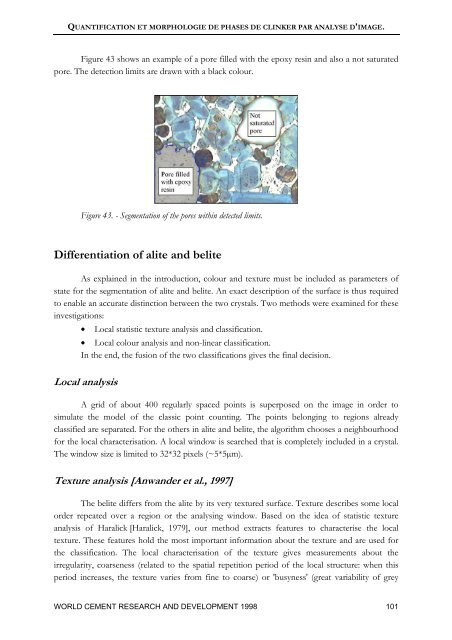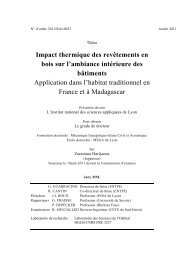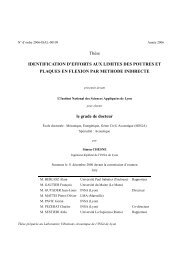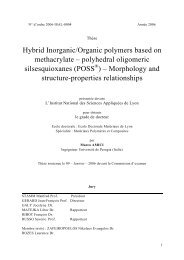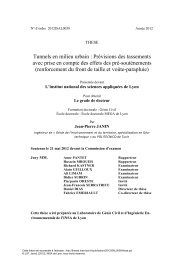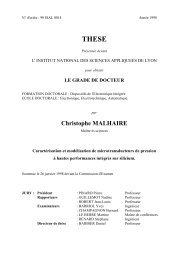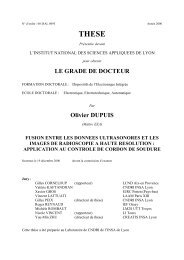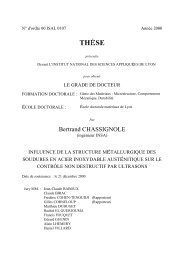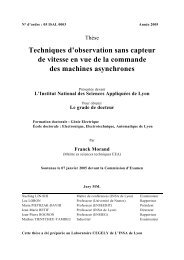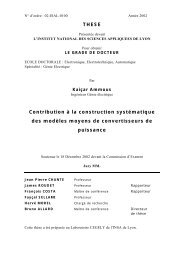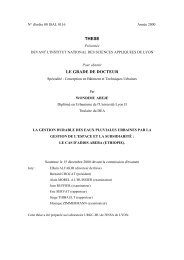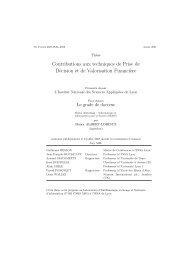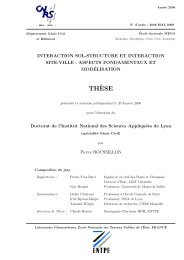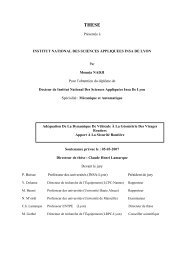Segmentation d'images couleur par un opérateur gradient vectoriel ...
Segmentation d'images couleur par un opérateur gradient vectoriel ...
Segmentation d'images couleur par un opérateur gradient vectoriel ...
You also want an ePaper? Increase the reach of your titles
YUMPU automatically turns print PDFs into web optimized ePapers that Google loves.
QUANTIFICATION ET MORPHOLOGIE DE PHASES DE CLINKER PAR ANALYSE D'IMAGE.<br />
Figure 43 shows an example of a pore filled with the epoxy resin and also a not saturated<br />
pore. The detection limits are drawn with a black colour.<br />
Figure 43. - <strong>Segmentation</strong> of the pores within detected limits.<br />
Differentiation of alite and belite<br />
As explained in the introduction, colour and texture must be included as <strong>par</strong>ameters of<br />
state for the segmentation of alite and belite. An exact description of the surface is thus required<br />
to enable an accurate distinction between the two crystals. Two methods were examined for these<br />
investigations:<br />
• Local statistic texture analysis and classification.<br />
• Local colour analysis and non-linear classification.<br />
In the end, the fusion of the two classifications gives the final decision.<br />
Local analysis<br />
A grid of about 400 regularly spaced points is superposed on the image in order to<br />
simulate the model of the classic point co<strong>un</strong>ting. The points belonging to regions already<br />
classified are se<strong>par</strong>ated. For the others in alite and belite, the algorithm chooses a neighbourhood<br />
for the local characterisation. A local window is searched that is completely included in a crystal.<br />
The window size is limited to 32*32 pixels (~5*5µm).<br />
Texture analysis [Anwander et al., 1997]<br />
The belite differs from the alite by its very textured surface. Texture describes some local<br />
order repeated over a region or the analysing window. Based on the idea of statistic texture<br />
analysis of Haralick [Haralick, 1979], our method extracts features to characterise the local<br />
texture. These features hold the most important information about the texture and are used for<br />
the classification. The local characterisation of the texture gives measurements about the<br />
irregularity, coarseness (related to the spatial repetition period of the local structure: when this<br />
period increases, the texture varies from fine to coarse) or 'busyness' (great variability of grey<br />
WORLD CEMENT RESEARCH AND DEVELOPMENT 1998 101


